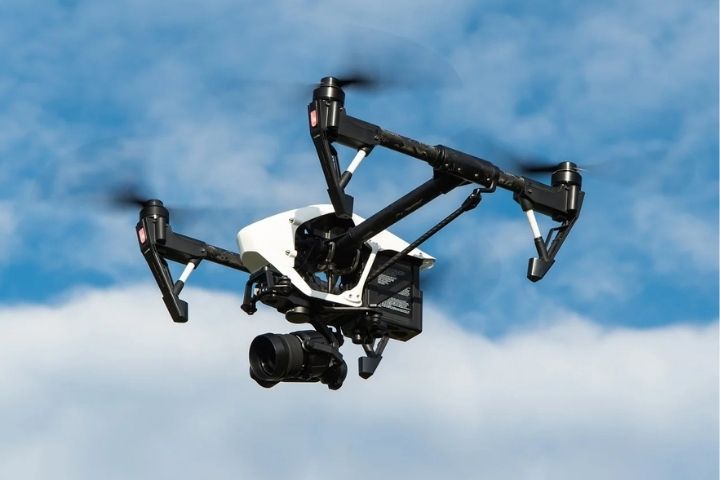Camera Drones are also known as the Unmanned Aerial Vehicles (UAVs). They are the high-tech devices that work with propellers or rotors that allow them to stay and propel themselves in the air. Many of these models usually have four propellers. So, they are also called quadcopters.
You can find drones with three, six and up to eight propellers. The most common propellers in drones are two-bladed propellers, although three or four-blade propellers are used in some models. Its price is more affordable. Its uses range from leisure to assisting military, emergency forces.
Table of Contents
What Are Camera Drones?
These camera drones are a subtype of drones, but the difference is these are equipped with photo and video cameras. They are drones, of small dimensions, controlled or directed remotely. In the case of camera drones, it is a matter of incorporating into these remote flight devices a camera that captures aerial images wherever the drone travels. In this way, we can see in real time or photograph everything that the drone sees.
What Are Camera Drones For?
Nowadays the usage of these drones is widespread. In addition to being an element of leisure and entertainment. It allows taking photographs of beautiful and remote landscapes and locations, inaccessible on foot.
They are also used at large public events – sports, music or political, for example – to monitor behavior or identify potential threats. As can be seen, they are multifunctional. It is used as a support tool in many professional areas. Security and emergency forces use camera drones to search forests or hard-to-reach areas in search of missing people.
Working Of A Camera Drone
Drones are piloted by remote control and can perform different movements. They can turn to the right or left of their vertical axis and longitudinal axis, they can rise vertically or rotate forwards or backwards in relation to their transverse axis. All these movements are controlled by adjusting the propulsion of each propeller and this is done with a device called a central flight controller.
The most common propellers in drones are two-bladed propellers, although three or four-blade propellers are used in some models. To keep the drone stable, two of these propellers rotate in one direction and the other two rotate in the opposite direction.
Camera drones are remotely directed autonomous flight devices that are powered by rechargeable batteries with limited autonomy, which keep them in the air. On the other hand, the flight instructions are operated using remote control or through previous programming.
Central controller of the drone consists of different components, one of the main being the magnetometer, which measures the strength and direction of the magnetic field and which functions as a compass pointing to the magnetic north pole. The controller receives the information about the position of the device through a GPS unit, which is a satellite navigation and location system. Some professionals also use a separate magnetometer to the one contained in the flight controller to avoid interference.
